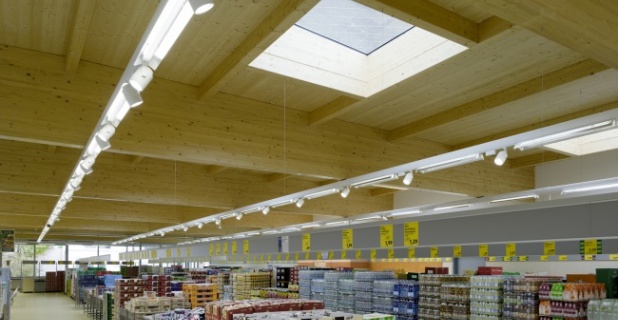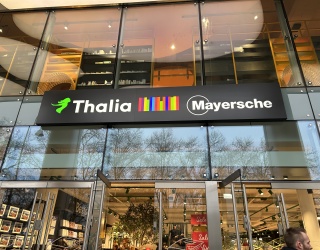Running a supermarket requires a lot of electricity. Long rows of refrigerators have to be kept cool and large areas have to be lit. A new concept enables supermarket operators to cut their energy use by around 25 per cent.
Cold air flows out of the long rows of shelves filled with sausages, dairy products and fish. Numerous lamps light up the space where daylight barely penetrates. Supermarkets use nearly ten times the energy of a normal household. Researchers at the Fraunhofer Institute for Solar Energy Systems ISE in Freiburg, Germany have now created alternatives.
25 percent less energy consumption can be reached
“We have developed an integrated concept in collaboration with property developers, the planning team and manufacturers and as a result, we aim to reduce energy consumption by 25% in comparison to regular supermarkets”, says Nicolas Réhault, Group Leader at ISE.
Main focus is on cooling
The main focus of the concept lies in the area of cooling. This is because at approximately 40 to 50%, it represents the largest share of the electricity bill. The freezer-systems have to reliably store pizza, cake, fish, etc. at -25° Celsius, otherwise the goods will spoil. Sausages and cheese must be stored at a maximum of four degrees Celsius. Normally, plug-in freezers are used for this purpose. They generate the required level of refrigeration themselves and pump the produced heat directly into the store – a practical but inefficient method.
Central refrigeration system minimises costs
ISE researchers have now developed a combined central refrigeration system in collaboration with property developers and the planning team. Now, all cooling points are connected to a combined central refrigeration system. The heat is not dissipated into the store but channeled via a three-stage recooling system. During the winter the system recovers the heat via a heat exchanger and uses it to heat the store. Residual heat is channeled via a gas chiller and geothermal heat pump in the surrounding area. In doing so heated water is pumped through probes into the ground where the heat is dissipated and the water is fed back cold. The result of this is that freezers and chiller cabinets only require half the electricity of comparable standalone units. Gas and oil-fired boilers are superfluous as heating is provided by the waste heat from the cooling systems. The heating system also has an effect on the ventilation system. The system is no longer required for heating; rather, it is used exclusively for introducing fresh air into the store, and is therefore a third smaller in size.
Carbon dioxide as coolant
The scientists have also optimized the choice of refrigerant, the agent which serves to absorb heat and transport it to the chilled areas. However between 5 and 15% of the refrigerant leaks out of any system annually. Conventional refrigerants have a high global warming potential, in other words, they contribute to heating the atmosphere. For this reason, the scientists utilized carbon dioxide, which has a global warming potential 3000 to 4000 times less than conventional refrigerants. Up until now, carbon dioxide has rarely been used as a refrigerant as the system must withstand high pressures. Moreover, the efficiency of the system is reduced during hot summer days. In order to compensate for losses at high ambient air temperatures, the experts integrated a third cooling stage in collaboration with their colleagues from Hafner-Muschler. When the sun beats down from the sky, the refrigerant is sub-cooled via a geothermal heat exchanger.
Use of daylight reduces costs for lighting
Lighting makes up the second largest share of the electricity bill. For this reason the scientists employ daylight to illuminate large stores. Light enters the store via triple-glazed skylights. A microscreen is fitted between the individual panes of glass to reflect direct sunlight which allows only indirect light to pass through. Artificial light in the form of lamps is additionally switched on and controlled in relation to the available daylight.
“Part of our concept has already been implemented by Aldi Süd in their new buildings. This enabled 20% energy savings to be achieved during the first year of operation”, explains Réhault. “New control strategies have now enabled us to optimize these concept components so that energy savings of 25% will be saved in the second year of operation, compared to a standard branch. This is already very close to our goal of 30%.”






